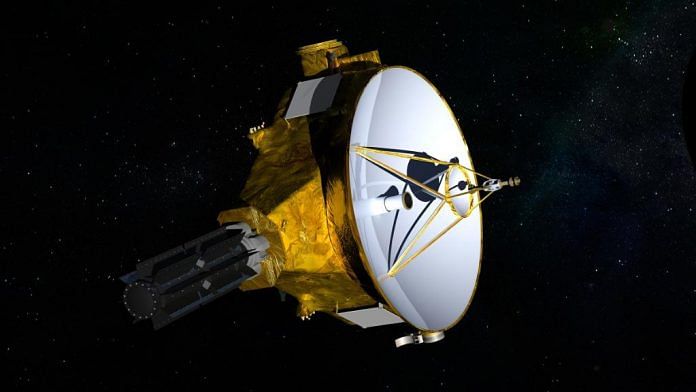The New Horizons mission is likely to transmit initial data from its flyby past ‘Ultima Thule’ by 10 pm IST tonight.
Bengaluru: Soon after the New Year dawned, NASA’s New Horizons mission conducted a historic flyby of the farthest, oldest body ever explored by humankind.
The flyby, which occurred at 11.03 am IST, saw New Horizons pass within 3,550 km of the body called 2014 MU69, nicknamed Ultima Thule.
The mission, which earlier gave us groundbreaking information about the dwarf planet Pluto, is moving in the region beyond Neptune called the Kuiper (pronounced “kye-per”) Belt.
New Horizons is an interplanetary space probe and a part of NASA’s New Frontiers programme, which also includes missions like the Jupiter orbiter Juno as well as the OSIRIS-Rex to bring the sample of an asteroid to Earth.
It was built in conjunction with the Johns Hopkins University, Maryland, US, and Southwest Research Institute, Texas.
Also read: Govt clears Rs 10,000-crore Gaganyaan mission to send 3 Indians to space by 2022
A blurry object
The craft was launched in 2006 and performed its close flyby of Pluto in 2015, giving us spell-binding images of the dwarf planet and its moon system over the next one year. The craft also discovered new Pluto moons.
The object 2014 MU69 was named so because it was discovered in 2014, when the New Horizons team was planning a second target for the mission. It has never been observed clearly with telescopes.
Even NASA’s Hubble telescope, the world’s first space-based optical telescope, records it all pixelated and blurry. The object orbits at a mean distance of 44 astronomical units (AU) from the Sun, where the distance from the Sun to the Earth is 1 AU, and to Neptune, 30 AU.
New Horizons completed its closest approach to 2014 MU69 when the latter was 43.4 AU from the Sun, a distance it hits every 295 years. At this distance, data from New Horizons will take six hours to transmit.
MU69 got the nickname Ultima Thule after NASA launched a global voting campaign for the name. ‘Ultima Thule’ is a Latin phrase, a metaphor for a distant place beyond the borders of our world. The body doesn’t have an official name yet — it will be decided once data from New Horizons starts to show its composition and size.
The body is currently estimated to be 30 km wide, irregularly shaped, with no moons or rings. All other characteristics, such as brightness, size and shape, will be determined through data from the spacecraft. While some of the data is expected over the next two days, the bulk will take 20 months to transmit and download. Initial data is expected to be released by 10 pm IST Tuesday.



